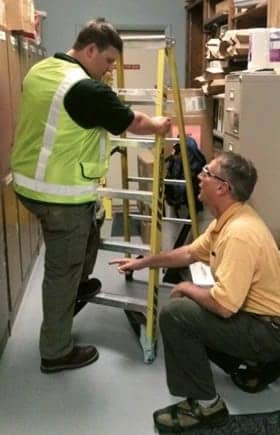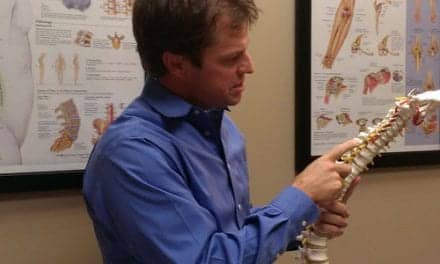The therapist plays a key role in decreasing unnecessary work absence and keeping patients at work and productive.
by Margot Miller, PT
Millions of American workers develop health problems that either temporarily or permanently keep them out of work each year. In most cases, this involves a relatively brief recovery period. However, approximately 10% of these workers are affected by conditions that result in significant work absences, and some can leave an individual out of work permanently. The estimated total annual cost of disability benefits paid under sick leave, workers’ compensation, short-term and/or long-term disability, SSDI (Social Security Disability Insurance), FMLA (Family Medical Leave Act), and ADA (Americans with Disability Act) exceeds $100 billion. This article will focus on the therapist’s role in facilitating Stay at Work or Return to Work (SAW/RTW) to decrease long duration absences from work.
The American College of Occupational and Environmental Medicine’s “Preventing Needless Work Disability by Helping People Stay Employed” reported that the fundamental reason for most medically related lost work days and lost jobs is not medical necessity. Rather it is nonmedical decisions made during the SAW/RTW process, including administrative delays for treatment or specialty referral, lack of transitional or modified work, ineffective communication, and logistic problems.
The steps involved in determining SAW/RTW include the following:
1. A medical condition or precipitating event occurs—determine whether the worker can perform the job.
2. Assess worker’s current ability.
a. Functional capacity—determine what the worker is able to do today.
b. Functional limitations—determine what the worker cannot do today that they can normally do.
c. Medical restrictions—determine what the worker cannot do due to the potential of doing medical harm.
3. Understand/identify the job requirements.
4. Compare worker’s job requirements to that person’s current abilities.
5. Take necessary actions to return the worker to work. This may include modifying current job duties or identifying an alternate duty job to enable return to work.
When the medical condition will not worsen with work, when the worker wants to work, and when the employer will allow temporary modification of the job demands if needed, the above process steps can be accomplished quickly. It is at this point that therapists can be involved to facilitate SAW/RTW.
Assessing the Worker’s Current Capacity
Functional capacity testing is appropriate to identify the impaired worker’s current abilities as well as to identify limitations that could affect SAW/RTW. The testing should be job specific, testing the worker’s functional abilities specific to the job requirements to establish a baseline of functional abilities. This functional capacity test serves as a work status test. A job-specific conditioning or job-specific functional restoration program can then be developed, in conjunction with appropriate treatment, to restore movement, maximize strength, decrease pain/symptoms, and improve functional abilities. Repeat functional tests are performed to assess functional gains. Education targeted to the medical condition and relative to the specific job functions increases the worker’s knowledge and problem solving using injury prevention and rehabilitation principles. Job coaching performed at the worker’s workstation assists integration of education principles, ie, appropriate movement patterns, posture changes, and strategies to reduce reported discomfort and improve safe job performance. As function improves, the worker should be able to perform more original job duties, until able to perform 100% of the job duties.
The therapist must be part of a team that includes the employee, case manager, physician, and employer. The goal is to keep the worker at work and productive through the entire process, minimizing days away from work. With ongoing communication, all parties are informed and working toward the end goal of the worker’s full duty release to their original job.
Understanding the Job Requirements
Functional job analysis is a structured process of objectively identifying and quantifying the functional requirements of a job. This requires going to the worksite and taking actual measurement of the forces, weights, distances, repetitions, postures, etc involved in the worker’s job. Essential job functions must be identified and separated from marginal job functions. Once the job requirements are identified, a work ability form can be developed. The therapist completes the current abilities section of the form after performing a functional work status test, identifying the match between the worker and the job requirements. The work ability form can then be sent to the physician for signature to enable SAW/RTW with the worker performing those job duties of which they are capable.
Developing Transitional Work Program/Modified Duty
Once the physician has approved the worker for SAW or RTW, therapists can assist the employer in developing a transitional work program or in modifying the original job so that the worker stays within their current abilities. It is helpful if a functional job analysis and functional job description have already been performed for the job. If not, completing both of these is a critical first step.
Each job function activity or task should have specific physical requirements linked to it, such as the following example of a truck loader job description:
Job Function: Load products onto trailers according to drop sequence and load procedures
A. Activity: Assemble bulk loaded products
• Floor to Waist Lift (Rarely) 40 pounds to assemble bulk loaded products
• Waist to Crown Lift (Rarely) 40 pounds from 5 inches to 36 inches to assemble bulk loaded products
B. Activity: Operate rider pallet truck (end control)
• Stair Climb (Occasionally) one step, each step height is 11 inches, to operate rider pallet truck
• Stand (Frequently) to operate rider pallet truck
• Right or Left Hand Coordination (Frequently) to operate rider pallet truck
C. Activity: Transfer ice cream containers from pick slots and dry ice from dry ice bin into ice cream bags and load onto forklift
• Floor to Waist (Rarely) 16 pounds to transfer ice cream containers from pick slots and dry ice from dry ice bin
• Pulling (Rarely) horizontally at self-selected height with a force of 67 pounds up to 5 feet indoors on a smooth surface to transfer ice cream containers from pick slots and dry ice from dry ice bin
D. Activity: Load chemicals from pallet to trailer floor
• Floor to Waist (Occasionally) 62 pounds to load chemicals from pallet to trailer floor to load products onto trailers
Using this example, if the worker has the ability to stair climb occasionally, stand frequently, perform right/left hand coordination frequently, lift 45 pounds from floor to crown rarely, and push 70 pounds horizontally rarely, they would be able to accomplish the job function of loading products onto trailers, with the exception of loading chemicals from a pallet to the trailer floor. The worker could return to productive work provided they had assistance when loading chemicals from pallet to the trailer floor. Once the worker demonstrates the ability to occasionally lift 62 pounds safely from floor to waist, they can perform 100% of the job duties. This is identified through repeated functional testing of floor to waist lifting.
Developing job descriptions in this manner will give the worker, physician, and employer the information critical for SAW/RTW to occur. Without objective job matching, it’s a guess as to what the worker can do compared to the job, often resulting in the worker being out of work for an extended period of time. Employers are leery of taking workers back, physicians are concerned workers may be asked to do more than they can do, and workers are fearful of hurting themselves. When objective information is used, the guesswork is eliminated. In addition, allowing workers to recover on the job is key to disability prevention. Transitional work and/or modified duty programs enabling workers to be productive, active, and safely on the job through the recovery period, before they reach 100%, will lead to optimal recovery.
Additional Opportunities and Services
Therapists will find that once they are at the worksite, there are opportunities to provide services beyond the single SAW/RTW case that brought them to the workplace in the first place. Functional job analysis, developing functional job descriptions, job coaching/education related to optimum body positioning, and integration of preshift stretching and microbreaks to be performed during the work day are a few such services. The employer may even be open to bringing treatment services on-site, eliminating the need for workers to leave work for therapy. Injury prevention services are a critical component and can be added to the suite of services offered to local employers. Employers are recognizing that preventing the injury is the most cost-effective solution for reducing costs associated with workplace injuries.
On-site models vary related to the days, hours, and specific services provided. The ultimate goal is keeping workers at work and productive, decreasing unnecessary work absence, reducing pain and suffering for the worker, and lowering costs for the employer.
Summary
The therapist’s role is critical in decreasing unnecessary work absence. Services including functional job analysis/functional job descriptions, work status functional testing, job-specific conditioning, targeted education, and job coaching at the worksite will facilitate a successful SAW/RTW process. RM
Margot Miller, PT, is vice president, Provider Solutions, for WorkWell Systems Inc, Duluth, Minn. She has had more than 30 years of experience in occupational health and has written numerous articles about topics relevant to repetitive strain, functional capacity testing, and prework screening. For more information, contact [email protected].





